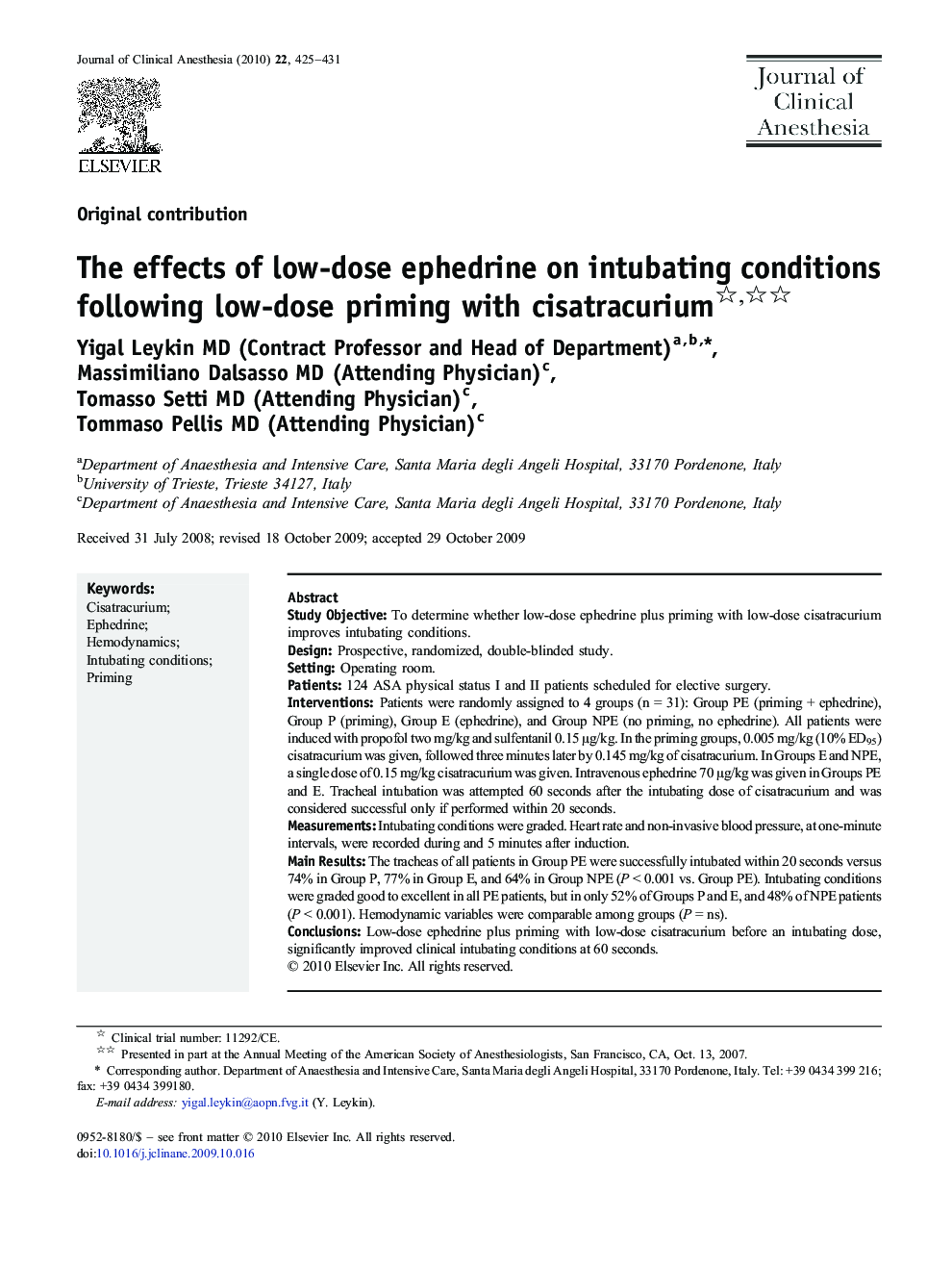| Article ID | Journal | Published Year | Pages | File Type |
|---|---|---|---|---|
| 2762999 | Journal of Clinical Anesthesia | 2010 | 7 Pages |
Study ObjectiveTo determine whether low-dose ephedrine plus priming with low-dose cisatracurium improves intubating conditions.DesignProspective, randomized, double-blinded study.SettingOperating room.Patients124 ASA physical status I and II patients scheduled for elective surgery.InterventionsPatients were randomly assigned to 4 groups (n = 31): Group PE (priming + ephedrine), Group P (priming), Group E (ephedrine), and Group NPE (no priming, no ephedrine). All patients were induced with propofol two mg/kg and sulfentanil 0.15 μg/kg. In the priming groups, 0.005 mg/kg (10% ED95) cisatracurium was given, followed three minutes later by 0.145 mg/kg of cisatracurium. In Groups E and NPE, a single dose of 0.15 mg/kg cisatracurium was given. Intravenous ephedrine 70 μg/kg was given in Groups PE and E. Tracheal intubation was attempted 60 seconds after the intubating dose of cisatracurium and was considered successful only if performed within 20 seconds.MeasurementsIntubating conditions were graded. Heart rate and non-invasive blood pressure, at one-minute intervals, were recorded during and 5 minutes after induction.Main ResultsThe tracheas of all patients in Group PE were successfully intubated within 20 seconds versus 74% in Group P, 77% in Group E, and 64% in Group NPE (P < 0.001 vs. Group PE). Intubating conditions were graded good to excellent in all PE patients, but in only 52% of Groups P and E, and 48% of NPE patients (P < 0.001). Hemodynamic variables were comparable among groups (P = ns).ConclusionsLow-dose ephedrine plus priming with low-dose cisatracurium before an intubating dose, significantly improved clinical intubating conditions at 60 seconds.
